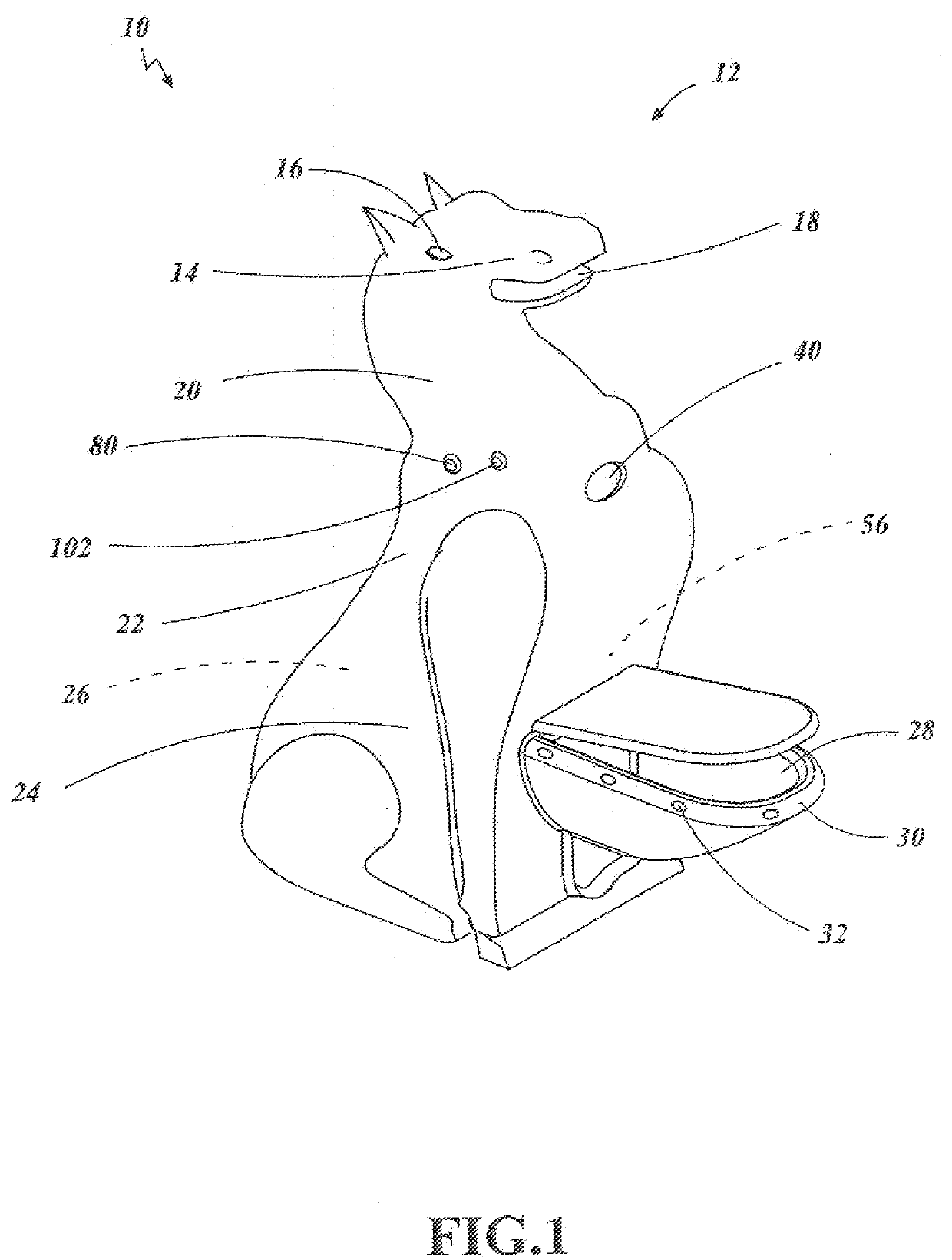Animal Design Toilet
a toilet and animal design technology, applied in the field of animal design toilets, to achieve the effect of facilitating the reduction/removal of odor and removing nois
- Summary
- Abstract
- Description
- Claims
- Application Information
AI Technical Summary
Benefits of technology
Problems solved by technology
Method used
Image
Examples
first embodiment
[0041]the ADT 10 are comprised of an animal structure 12 with a head 14 having eyes 16, a mouth 18, a neck 20 and both an upper body 22 and a lower body 24 located within the animal structure 12 is an interior 26 that houses all of the operational components of the ADT 10. Located on a rear area of the animal structure is an access panel 36 that is attached by a hinge which allows the panel to swing open. The access panel 36 provides easy access to the interior of the ADT 10 for inspection or repair. To provide a tight secure seal when the access panel 36 is closed, a gasket 38 can be placed around the panel to interface with the ACT 10.
[0042]Extending outward from the front of the lower body 24 is the toilet bowl 28 with a rim 30, as shown in FIG. 1,24, 5, 7-11. The bowl is preferably integrally attached to the animal body structure 12 and allows a person to easily and comfortably sit without any interference from the animal structure 12. Located within the animal structure 12 inte...
second embodiment
[0044]For the ADT 10, the animal's lower body 24 is replaced with a base section 50, as shown in FIGS. 8-10. The base section 50 has an interior 52 to enclose the ADT's functional components, and other surface. The base section 50 can have any dimensions, which are typically determined by the use, location or space availability to place the ADT. Typically, the base section 50 will have the shape and size of a conventional toilet's lower section.
[0045]To increase the functionality of the ADT 10, an odor reduction assembly (ORA) 56 can be utilized. As shown in FIGS. 1 and 4, the ORA 56 functions with a plurality of openings 32 that circumvent the rim 30 on the toilet bow 28. Odor passes into the openings 32 and out through a discharge valve 58. To an odor escape tube 60. A fan blade 63 is located in-line with the valve 58 and escape tube 60. The fan pulls the odor out and through the openings the valve and tube. The fan 62 is powered by a vacuum motor 64 that preferably is secured on ...
PUM
 Login to View More
Login to View More Abstract
Description
Claims
Application Information
 Login to View More
Login to View More - R&D
- Intellectual Property
- Life Sciences
- Materials
- Tech Scout
- Unparalleled Data Quality
- Higher Quality Content
- 60% Fewer Hallucinations
Browse by: Latest US Patents, China's latest patents, Technical Efficacy Thesaurus, Application Domain, Technology Topic, Popular Technical Reports.
© 2025 PatSnap. All rights reserved.Legal|Privacy policy|Modern Slavery Act Transparency Statement|Sitemap|About US| Contact US: help@patsnap.com



